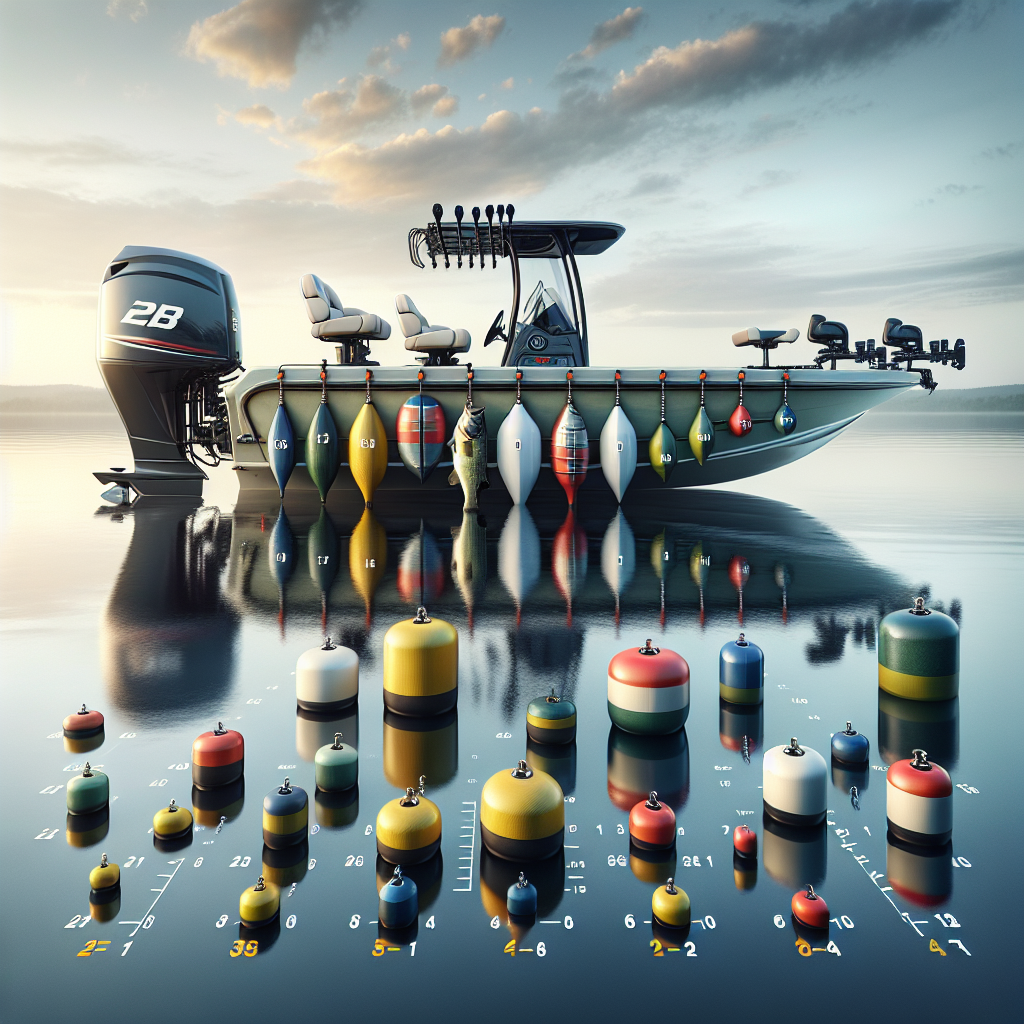The Importance of Proper Fender Sizing for Bass Boats
When it comes to owning a bass boat, there are many maintenance and safety concerns that should be addressed to keep your investment in top condition. One important aspect of boat care is the use of proper fender sizing. Boat fenders, also known as bumpers, are designed to protect your boat from damage during docking, mooring, and other scenarios in which your boat may come into contact with other objects.
What is a Boat Fender and Why Do You Need Them?
A boat fender is a cushioning device that is used to absorb the impact when your boat makes contact with a dock, another boat, or any other object. Without boat fenders, you risk damaging your boat’s finish and structure when you come into contact with the dock or other boats. The primary role of boat fenders is to protect boats from damage and to prolong their life and value.
How Proper Fender Sizing Protects Your Bass Boat
In order for boat fenders to be effective, they must be the correct size for your boat’s dimensions. When you select fenders that are too small for your bass boat, they will not provide enough protection and could get crushed under the weight of your vessel. On the other hand, if your fenders are too large, they could get tangled up in the dock lines, leaving your boat unprotected and at risk for damage.
Understanding the Relationship Between Boat Size and Fender Size
Choosing the right size fender for your bass boat depends on your boat’s length and weight. You should use a boat fender size chart to help you determine the right size fenders for your specific boat. When selecting your fenders, it is important to consider both the length of your boat as well as its weight. Heavy boats require heavier fenders, while lighter boats require less robust fenders.
Deciphering Boat Fender Size Chart Fundamentals
Navigating Through Different Fender Types and Their Sizing
When it comes to boat fenders, there are two primary types: cylindrical and round. Cylindrical fenders are better for boats with flat sides, while round fenders are more effective for boats with curved sides. Make sure to choose the right type of fender for your bass boat.
Another important factor to consider is the size of the fender. Most boat fender size charts provide sizing recommendations based on boat length and weight. However, keep in mind that different manufacturers may have their own sizing guidelines. Always check the manufacturer’s website for specific sizing information on the fender you are interested in.
Key Measurements for Choosing the Right Fender
Aside from boat length and weight, there are other measurements to consider when choosing the right fender for your bass boat. These include:
- The height of the dock
- The freeboard of your boat
- The beam, or width, of your boat
A general rule of thumb is to choose a fender that is two-thirds the height of the dock. As for freeboard, the fender should be positioned so that the bottom of the fender is even with the waterline. Finally, the fender should cover at least two-thirds of the boat’s beam.
Material Considerations for Fender Effectiveness and Durability
Boat fenders can be made from various materials, including PVC, vinyl, and rubber. PVC and vinyl fenders are cost-effective, but they tend to be less durable than rubber fenders. Rubber fenders are more expensive, but they are also more effective and long-lasting. Consider your budget and how frequently you use your bass boat when deciding on fender material.
| Fender Type | Advantages | Disadvantages |
|---|---|---|
| PVC | Affordable | Less durable |
| Vinyl | Cost-effective | Less durable |
| Rubber | Effective and durable | Expensive |
Step-by-Step Guide to Choosing the Right Fenders for Your Bass Boat
Choosing the right fenders for your bass boat is crucial to keep it protected from damage. Here is a step-by-step guide to choosing the right fenders for your bass boat:
A. Assessing Your Bass Boat’s Specific Needs
Before buying fenders, you should assess your bass boat’s specific needs. You must consider what type of water you will be in and the typical conditions you will encounter. For example, if you will be in an area with high waves or strong currents, you will need larger fenders than in calm waters.
B. How Many Fenders Does Your Bass Boat Require?
The number of fenders your bass boat requires depends on the boat’s length and weight. A general rule is to use one fender for every 10 feet of your boat’s length. It is best to use at least two fenders on each side of your boat. You may require more fenders if you are docking in rough conditions or near obstacles.
C. Matching Fender Size to Your Bass Boat Size
Matching the fender size to your bass boat size is crucial as you want a fender that will provide sufficient protection. The boat fender size chart provides the information you need to match the fender size to your bass boat. Take the measurements of your bass boat, such as the length and weight, and choose the appropriate fender size.
D. Tips for Seasonal and Storage Considerations
When preparing for seasonal storage, remove the fenders from your boat and store them separately. Clean and dry them thoroughly to prevent any mildew or mold growth, which can damage them. When the boating season begins again, inspect your fenders and inflate them to the required pressure. Remember to inspect your fenders periodically throughout the season to ensure they are in good condition and still providing sufficient protection.
By following these steps, you can choose the right fenders for your bass boat and protect it from damage. Proper fender sizing is crucial, and you must consider your boat’s specific needs to select the right fenders. By matching the fender size to your boat size, using the appropriate number of fenders, and storing them properly, you can prolong the life of your fenders and keep your boat protected.
Installation and Maintenance Tips for Boat Fenders
A. Correct Positioning of Fenders on Your Bass Boat
Proper positioning of fenders is essential to safeguard your bass boats from collisions and other damages. The most optimal position for installing a fender on a bass boat is above the water level, where most of the impact occurs. You should also make sure to align the fender horizontally and tie the knot tightly using a combination of ropes and boathooks that immobilize the fender to prevent slipping.
B. Securing Fenders: Knots and Hardware
To prevent fender slippage and keep them sturdy, proper knot-tying is paramount. A common knot that is perfect for attaching an anchor point to a fender is the Bowline knot. Knots directly link your fender to the boat via the anchor line, so ensure it’s done correctly to avoid positional problems.
C. Regular Maintenance to Prolong Fender Life
Regular maintenance is crucial to prolonging the life of boat fenders. As an essential part of the boat’s safety gear, fenders need to be checked for damages, deterioration, mildew, and creases, and any signs of wear should be rectified immediately.
D. When to Replace Your Boat Fenders
Knowing when to replace your boat fender can prevent damage to your boat in unexpected collisions. Fenders that have holes, cracks, or are deflated should be replaced immediately. Damage to the outer and inner lining or any other crucial part can also necessitate an immediate replacement.
| Data Point | Description |
|---|---|
| Optimal Positioning | Above water level for impact protection |
| Securing Fenders | Proper knot-tying and hardware for stability |
| Regular Maintenance | Checking for damages, deterioration, mildew, and wear |
| When to Replace | Holes, cracks, and deflation necessitate immediate replacement |
Case Studies and Best Practices in Fender Usage for Bass Boats
A. Real-world Examples of Fender Sizing and Placement
To gain a better understanding of why proper fender sizing is so important, it can be helpful to examine real-world examples of fenders that were either too small or too large for a particular boat. One such example is a bass boat that was equipped with fenders that were too small. The boat was moored in a marina during a particularly windy day when the bow was pushed against the dock. This caused significant damage to the boat’s gel coat, which required expensive repairs.
Conversely, a larger boat, such as a yacht, equipped with fenders that were too large created unnecessary drag and made dockside maneuvering difficult. The bottom line is that proper fender sizing can mean the difference between a relaxing day on the water and an expensive insurance claim or unnecessary hassle.
B. Expert Insights on Fender Selection and Care
When it comes to selecting the right fenders for your bass boat, there are many factors to consider. According to marine industry experts, one of the most important considerations is the material that the fender is made of. While vinyl fenders are a popular choice due to their affordability, experts recommend investing in higher quality fenders made of UV-resistant materials such as polyethylene. These specialty fenders are specifically designed for rough conditions and can offer superior performance and longevity.
Additionally, proper care and maintenance of your fenders is crucial to ensuring their effectiveness and longevity. Experts recommend regularly inspecting your fenders for any signs of wear or damage, cleaning them regularly with mild soap and water, and storing them in a cool, dry space when not in use.
C. Reviewing Common Mistakes in Fender Usage
Despite the importance of proper fender sizing and care, there are several common mistakes that boat owners make when it comes to fender usage. One such mistake is failing to adjust fenders as needed based on changing weather and water conditions. For example, fenders that were properly sized for calm weather may be inadequate during high winds or rough waters.
Another common mistake is underestimating the number of fenders needed for a particular boat. Marine industry experts recommend using at least one fender for every five to six feet of boat length, with additional fenders added as necessary based on the boat’s specific characteristics and intended use.
D. Resources for Further Learning and Expert Advice
As with any aspect of boating, there is always more to learn when it comes to fender selection, sizing, and maintenance. Fortunately, there are many resources available for boat owners seeking expert advice and guidance in this area. Whether you prefer online forums, boating publications, or in-person seminars, there are plenty of opportunities to expand your knowledge and become a more informed and confident boat owner.
FAQs
1. How many fenders do I need for my bass boat?
According to marine industry experts, a good rule of thumb is to use at least one fender for every five to six feet of boat length, with additional fenders added as necessary based on the boat’s specific characteristics and intended use.
2. How do I know which size fender to use for my bass boat?
The size of fender you need will depend on both the size and weight of your bass boat. It is recommended that you consult a boat fender size chart, which will guide you in selecting the appropriate fender size based on your boat’s specific measurements.
3. How do I properly care for my boat fenders?
Proper care and maintenance of your boat fenders is crucial to ensuring their effectiveness and longevity. Experts recommend regularly inspecting your fenders for any signs of wear or damage, cleaning them regularly with mild soap and water, and storing them in a cool, dry space when not in use.


